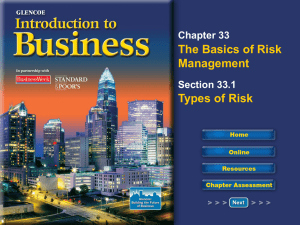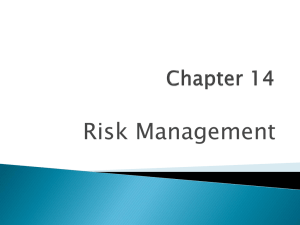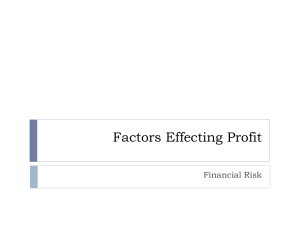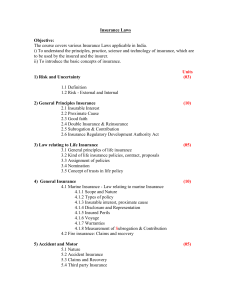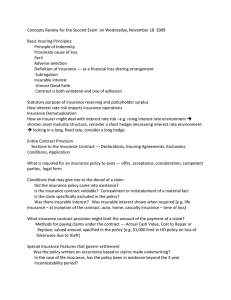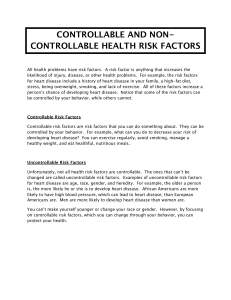Section 5.02 A Power Point
advertisement
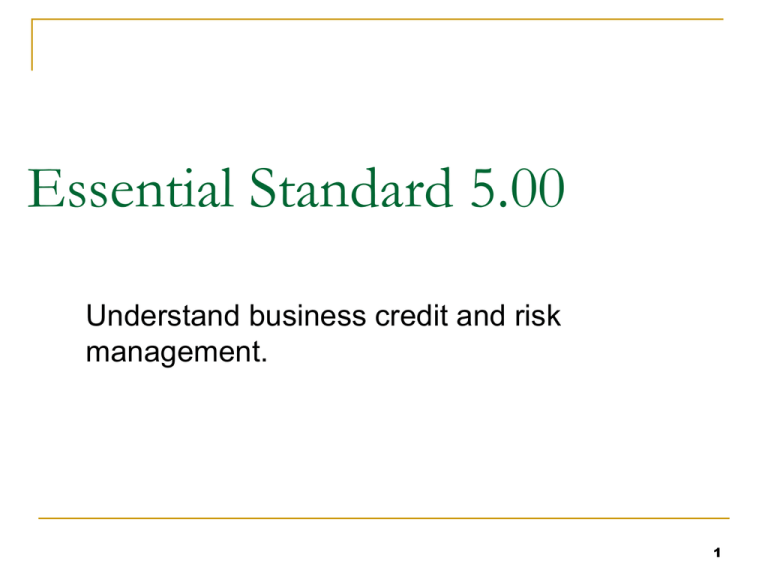
Essential Standard 5.00 Understand business credit and risk management. 1 Objective 5.02 Understand risk management and insurance. 2 Topics • • • • Types of risk Ways to handle risks Business Insurance Uninsurable risks 3 Types of risk Essential Question What are the types of risk? 4 Types of Risk • What is risk? The possibility of incurring a loss. • • What is risk management? It is a systematic process of managing risk to achieve set objectives. • • Different types of risk: Economic and non-economic Pure risk and speculative Controllable risk and uncontrollable Insurable risk and uninsurable 5 Types of Risk continued • Economic Results in financial loss. Three categories of economic loss: Personal risk – Result in personal losses Property risk – Loss of personal or business property including money, buildings and vehicles. Liability risk – Harm or injury to other people or their property because of your actions. Example: Fred’s Diner incurred a loss due to a fire. 6 Types of Risk continued • Non-economic • May result in embarrassment or inconvenience without financial impact. Example: Requesting for customers to move to another check-out lane. Pure Threat of a loss without an opportunity for gain. Example: Frost damages a strawberry patch. 7 Types of Risk continued • Speculative Risk Offers the chance of gain or loss. • Example: Mary opened a shoe store that operated for only six months. Controllable Risk Occurs when conditions can be controlled to lessen the chance of harm. Example: Sears installed centralized customer service stations in order to increase convenience. 8 Types of Risk continued • Uncontrollable Risk Cannot be controlled or reduced by your actions. • Example: Riding along a highway with other speeding automobiles. Insurable Risk Meets criteria of an insurance company for coverage. Example: An artist purchased insurance to cover his collection. 9 Types of Risk continued • Unpredictable amount of loss Example: A competitor of Staples, an office supply store, moved right across the street. 10 Ways to handle risk Essential Question How can businesses handle risk of loss? 11 Ways to Handle Risks Avoid Transfer Insure Assume 12 Ways to Handle Risks • Avoid the risk Declining to engage in particular activities. • Example: A book company decline an order to produce 6000 books in one day. Transfer the risk Allowing someone else to assume the risk. Example: A book company has a contract for a trucking company to transport its books. 13 Ways to Handle Risks continued • Insure the risk Purchasing insurance to cover risk. Example: General Electric sells insurance to customers to cover their appliances. Assume risk Finishing an activity and accepting full responsibility Example: Mary runs a coffee shop and offers a variety of services. 14 Business insurance Essential Question Why do businesses buy insurance? 15 Business Insurable Risks • Personnel Health insurance provides protection against the high costs of individual health care. Disability insurance provides payments to employees who are unable to work for an extended period due to serious illness or injury. Life insurance pays the amount of the insurance policy upon the death of the insured. 16 Business Insurable Risks continued • Property • Insurance is purchased to protect business from financial loss due unsuspectingly damages to their buildings, equipment, and building contents, including inventory. Business Operations Coverage as a result of accidents, injuries, and property damage. 17 Types of Uninsurable Risks Economic Conditions Consumer Demand Action of Competitors Technology Changes Local Factors Business Operations 18

